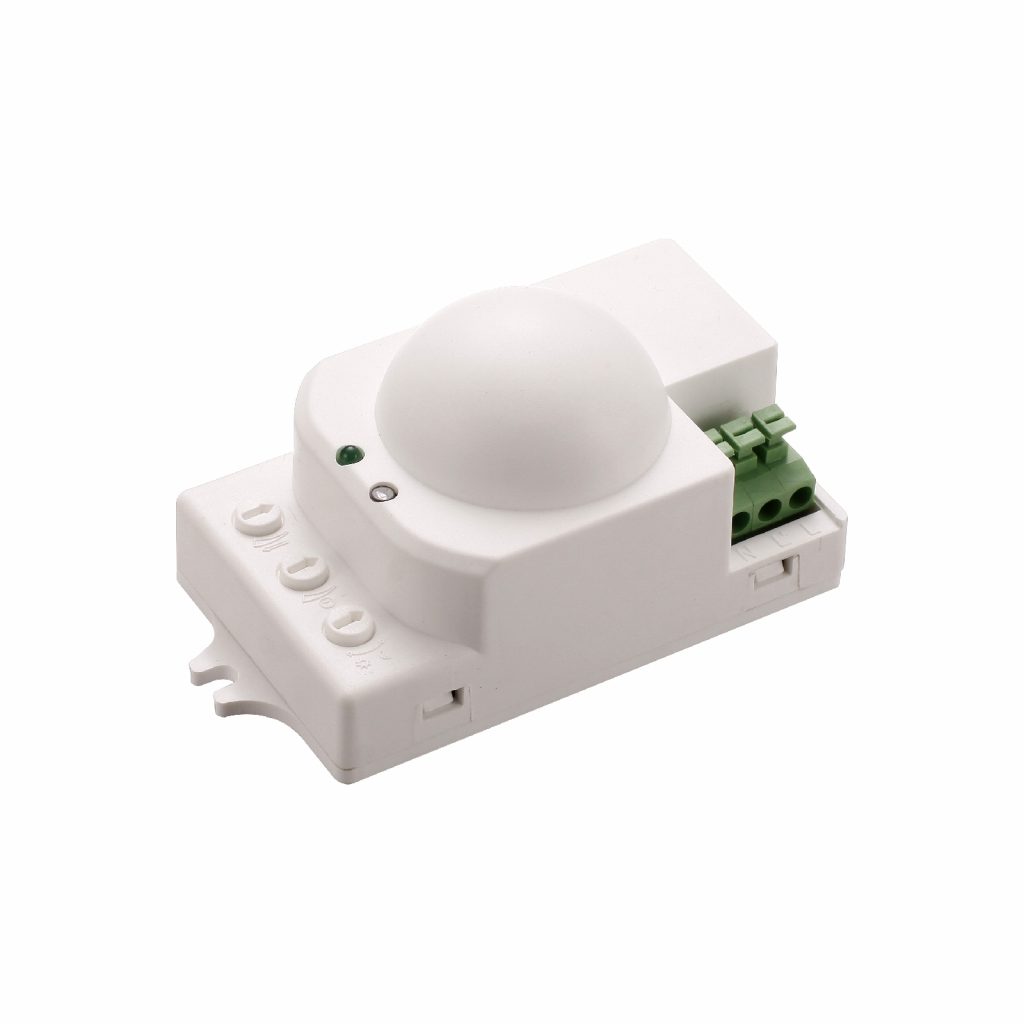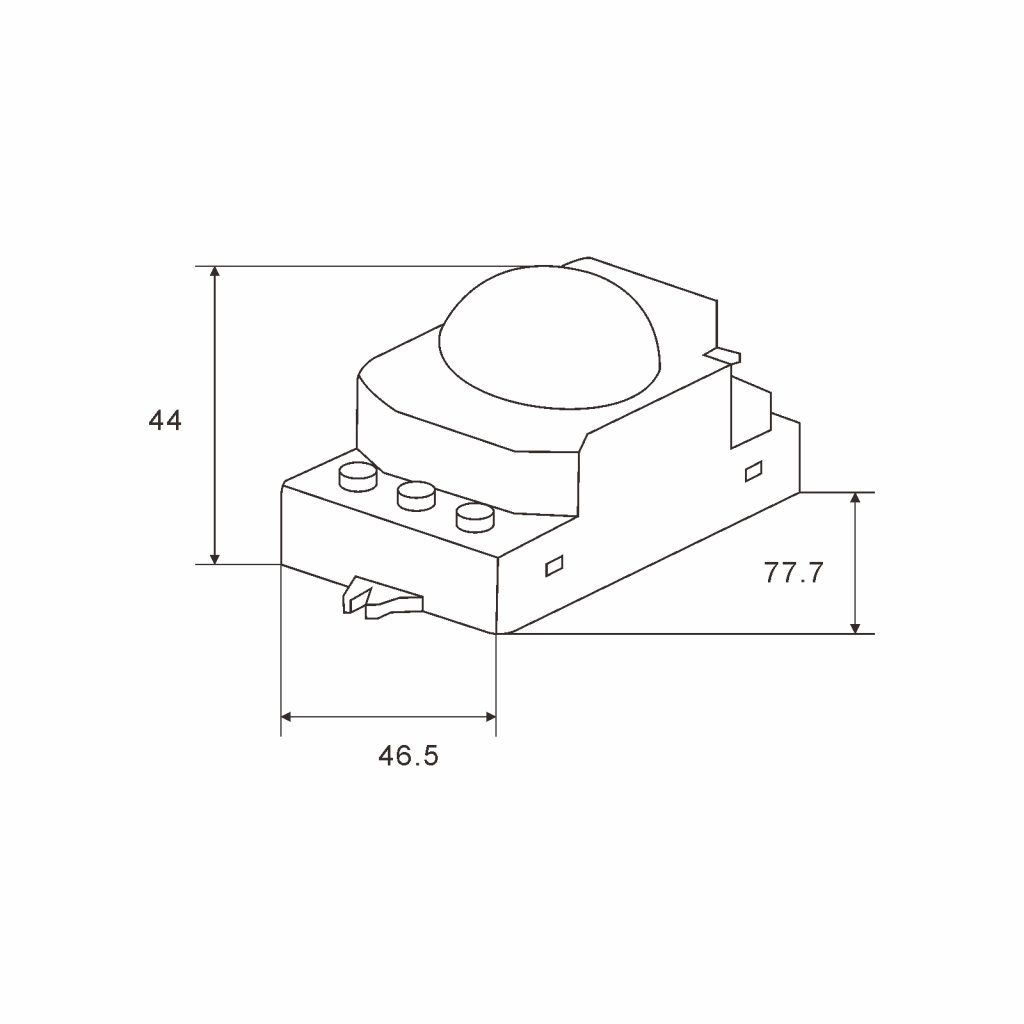Is Microwave Sensor Safe?
Table of Contents
ToggleDid you know that microwave sensors can detect motion from distances as vast as 45,000 mm? These advanced devices are revolutionizing security and lighting systems with their ability to operate without physical contact and penetrate various surfaces.
In this article, we’ll delve into the fascinating world of microwave sensors, exploring how they work, their safety, and why they are often preferred over traditional PIR sensors. From military applications to commercial use, discover the advantages that make microwave sensors a superior choice for detecting movement.
Whether you’re considering them for home security or large-scale infrastructure, this comprehensive guide will equip you with all the essential information you need to make an informed decision.
What Is A Microwave Sensor?

A microwave sensor is a type of motion sensor that uses microwaves to detect movement. Think of it like a bat using sonar, but instead of sound waves, it sends out microwave signals. These signals bounce off objects and return to the sensor. If something moves, the signal changes, and the sensor detects it.

Microwave sensors can detect objects up to 45,000 mm away, even through thin walls and glass. They are highly reliable and have no moving parts, making them ideal for military and security applications. Unlike other sensors, microwave sensors can work in rooms with low temperatures and are more sensitive than passive infrared (PIR) sensors. This makes them perfect for large areas like warehouses and outdoor spaces.
Types of Microwave Sensors
There are several types of microwave sensors, each designed for specific applications:
- Doppler Microwave Sensors: These sensors leverage the Doppler effect to detect movement. They are commonly used in motion detectors and lighting systems due to their reliability and precision.
- FMCW (Frequency Modulated Continuous Wave) Microwave Sensors: These high-end sensors use a frequency modulated continuous wave to detect movement. They are often employed in advanced security applications where accuracy is paramount.
- Pulse Microwave Sensors: Utilizing pulses of microwave energy, these sensors are typically found in industrial and commercial settings, where robust and reliable motion detection is required.
Is A Microwave Sensor Safe?
Yes, microwave sensors are safe. These sensors use microwave energy to detect motion, similar to how radar works. They emit low levels of microwave radiation, which is not harmful to humans or animals.
Additionally, power surges can lead to false alarms or even damage the sensor, so it’s important to use surge protectors.
How They Work:
- Microwave Signals: They send out microwave signals that bounce off objects and return to the sensor.
- Detection: If something moves, the signal changes, and the movement is detected by the sensor.
Principle of Operation
Microwave sensors operate by emitting high-frequency electromagnetic waves into a specific detection zone. When an object enters this zone, it reflects the microwave signals back to the sensor. The sensor then measures the time it takes for the signals to return and uses this data to calculate the distance and speed of the moving object. This precise measurement allows the sensor to detect even the slightest movements, making it highly effective for security and lighting applications.
Components of a Microwave Sensor
A typical microwave sensor comprises several key components:
- Transmitter: This part emits high-frequency electromagnetic waves into the detection zone.
- Receiver: The receiver captures the reflected microwave signals and sends them to the processing unit.
- Processing Unit: This component analyzes the reflected signals to calculate the distance and speed of the moving object.
- Antenna: The antenna is responsible for both transmitting and receiving the microwave signals, ensuring accurate detection.
Safety Features:
- Low Radiation: The level of microwave radiation used is minimal and safe.
- Non-Contact: They detect movement without needing physical contact with objects.
Advantages:
- Penetration: Can sense through thin walls and glass.
- Reliability: No moving parts, reducing wear and tear.
- Sensitivity: More sensitive than PIR sensors, ideal for large areas.
Applications:
- Security: Commonly used in supermarkets and convenience stores.
- Military: Reliable for security and surveillance.
Key Numbers:
- Range: Can detect movement up to 45,000 mm away.
- Temperature: Works best in cooler environments for maximum sensitivity.
In summary, microwave sensors are a safe and effective choice for detecting motion in various settings, offering superior performance and reliability. They are particularly suitable for large, open areas and security applications.
Frequently Asked Questions about Microwave Sensors
1. What can trigger a microwave sensor?
Microwave sensors can be triggered by any movement within their detection zone, including people, animals, or objects moving within range.
2. What is better, PIR or microwave sensor?
Both PIR and microwave sensors have their advantages. PIR sensors are ideal for detecting movement in smaller, contained spaces, while microwave sensors are better for larger, open areas due to their ability to detect through walls and glass.
3. Is a sensor microwave worth it?
A sensor microwave is worth it if you value convenience and precision in cooking, as it automatically adjusts settings for optimal results.
4. Can you put motion sensors outside?
Yes, both PIR and microwave motion sensors can be installed outdoors. However, microwave sensors are often preferred for outdoor use due to their ability to penetrate through various materials.
5. What is an outdoor microwave sensor uses microwave energy to form an invisible link between?
An outdoor microwave sensor uses microwave energy to form an invisible link between the sensor and the detection area, allowing it to detect any movement that interrupts this link.
6. How does a microwave motion detector work?
A microwave motion sensor works by emitting microwaves that reflect off moving objects. The sensor analyzes these reflections to detect motion.
7. What are the disadvantages of microwave motion sensors?
Disadvantages include potential interference from other electronic devices, sensitivity to environmental factors like wind and temperature, and higher cost compared to some other sensor types.
Tel: +86-577-88671000
E-mail: ceo@tosun.com
Skype: tosunelectric
Wechat: +86-139 6881 9286
WhatsApp: +86-139 0587 7291
Address: Room No.1001 Wenzhou Fortune Center,Station Road, Wenzhou, China
REQUEST A QUOTE
WhatsApp us
 : +86-139 0587 7291
: +86-139 0587 7291 English
English Español
Español Русский
Русский Français
Français العربية
العربية Português do Brasil
Português do Brasil Українська
Українська Türkçe
Türkçe Polski
Polski Nederlands
Nederlands Italiano
Italiano Bahasa Indonesia
Bahasa Indonesia हिन्दी
हिन्दी اردو
اردو አማርኛ
አማርኛ Հայերեն
Հայերեն ไทย
ไทย Монгол
Монгол فارسی
فارسی Shqip
Shqip Ελληνικά
Ελληνικά


